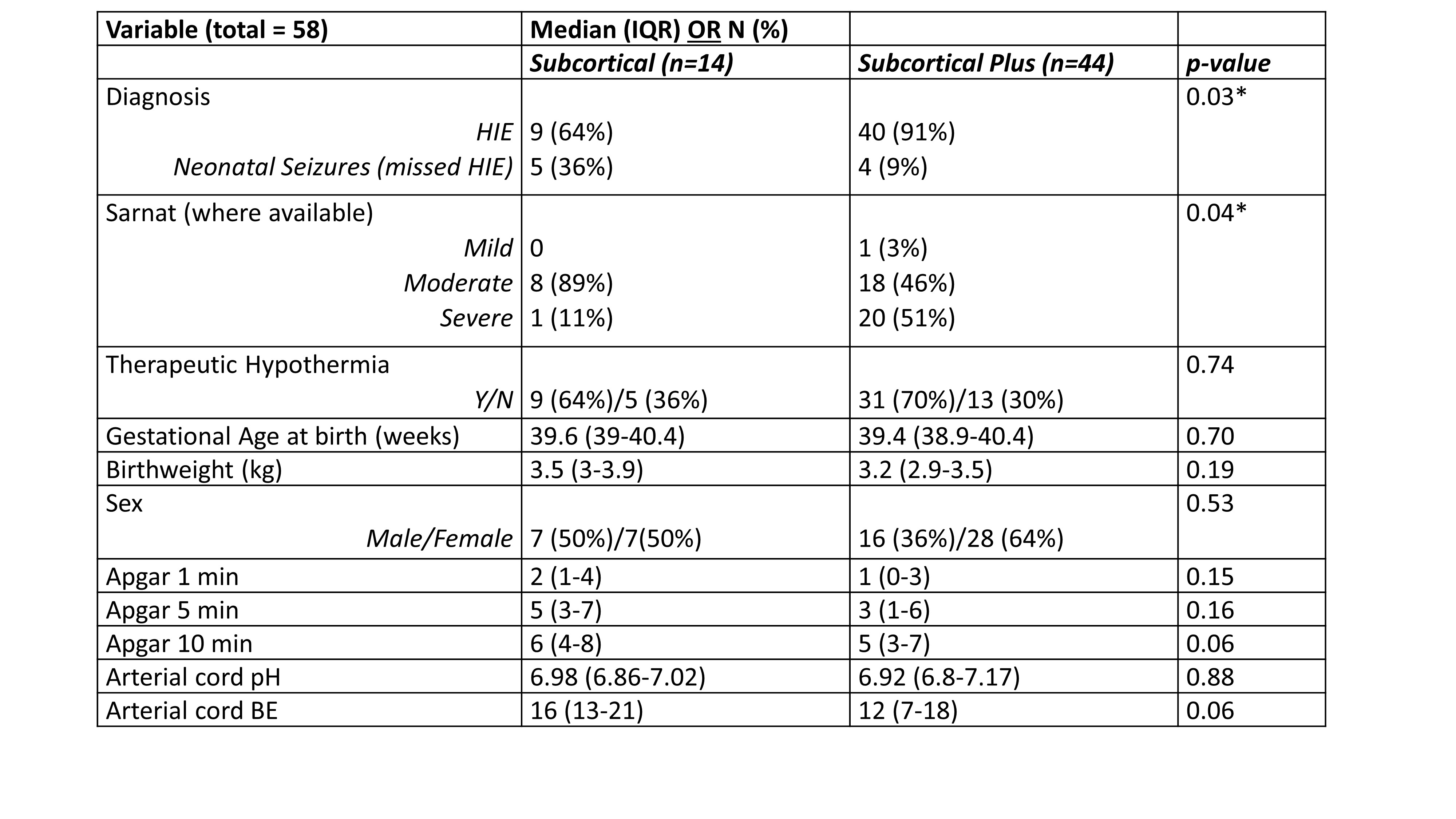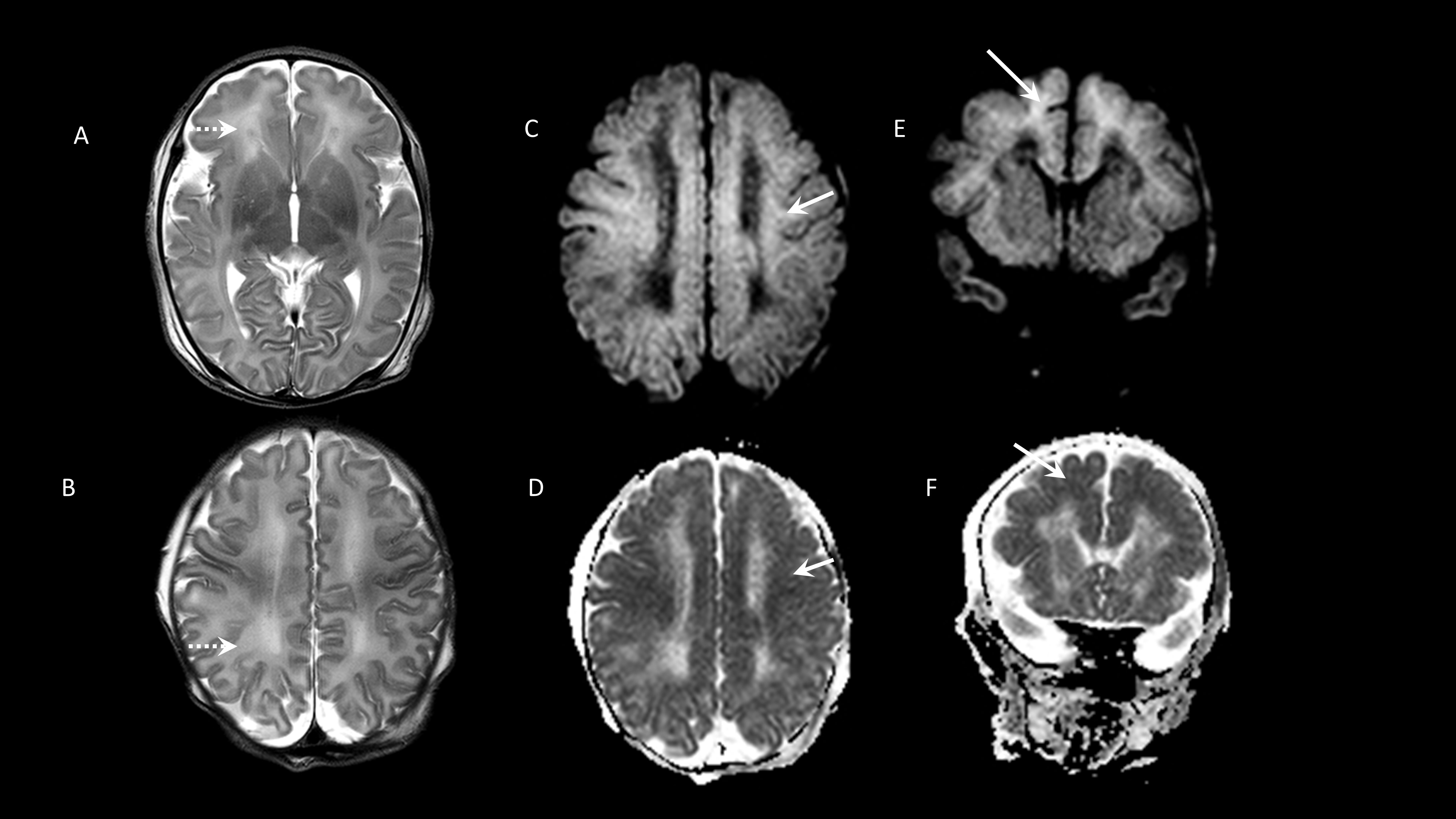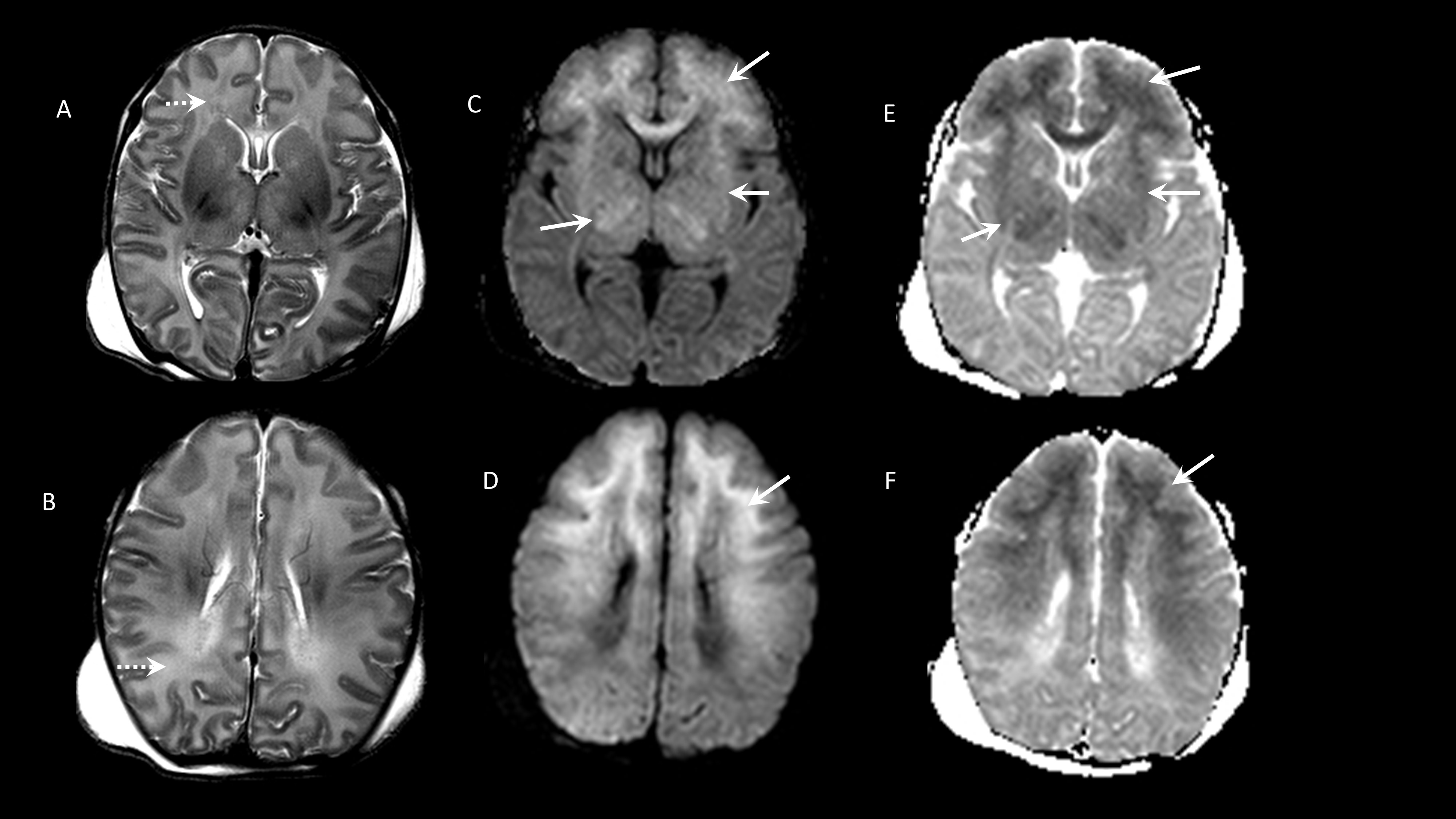Neonatal Neurology: Clinical Research
Neonatal Neurology 3: Clinical 3
189 - Injury In The Subcortical Zone In Neonates With Hypoxic Ischemic Encephalopathy: Clinical Characteristics And Outcome
Publication Number: 189.137

Caroline Ahearne, MB BCh BAO PhD (she/her/hers)
Locum Consultant Neonatologist
University Hospital Wales
Cardiff, Wales, United Kingdom
Presenting Author(s)
Background:
Injury in the subcortical area has been used to describe abnormalities in subcortical zone, deep white matter and deep grey matter on brain MRI. The impact of confined injury to the subcortical zone in neonates is not well described.
Objective:
To describe the clinical characteristics and neurodevelopmental outcomes in neonates with hypoxic-ischemic encephalopathy (HIE) with injury in the subcortical zone identified on brain MRI.
Design/Methods:
Retrospective single center cohort study of neonates with HIE and identified injury in subcortical zone. Clinical, neurophysiological and neurodevelopmental outcome data was collected from electronic charts. MRIs were reviewed by a paediatric neuroradiologist and scored according to the score by Weeke et al. The cohort was divided into infants with subcortical zone (SCZ) injury only (figure 1) and those with subcortical zone injury plus involvement of other brain regions (SCZ Plus) (figure 2). Neurodevelopmental follow-up with the Bayley Scales of Infant and Toddler Development (Edition III) was completed at 18 and 36 months.
Results:
58 infants were included in this case series. Basic perinatal data is reported in Table 1. Fourteen infants demonstrated injury in the SCZ pattern and 44 infants had SCZ Plus injury. Seizures occurred in 98% of the cohort. Neonates in the SCZ group received a median (IQR) of 1 (1-3) anti-seizure medication compared to 3 (2-3) in the SCZ Plus group (p=0.01) and had a less suppressed background on continuous EEG (p=0.001). MRI was performed on a median day 4 of life. Total Weeke score for the SCZ only group was a median (IQR) of 27/55 (19-31) compared to 37/55 (35-40) in the SCZ Plus group, p< 0.001. Injury in the frontal subcortical zone was more predominant in the SCZ group (p< 0.001) . There was 7% mortality in the SCZ group compared to 41% in the SCZ Plus group, p=0.02. Considering this, median (IQR) cognitive composite scores at 18 months were higher in the SCZ group compared to the SCZ Plus group, 100 (90-105) v. 88 (80-100) respectively, p=0.03. Similarly, the motor composite scores of the two groups were 103 (103-110) and 85 (64-97) respectively, p=0.02. There was no significant difference in language score at 18 months, but by 36 months, language composite scores were 102 (91-106) v. 86 (74-94) respectively, p=0.04.
Conclusion(s):
Injury confined to the subcortical zone in neonates with HIE was associated with high incidence of seizures but lower incidence of mortality. Long-term neurodevelopmental outcome of these infants is more favorable. This finding could aid in prognostication and family counselling.


